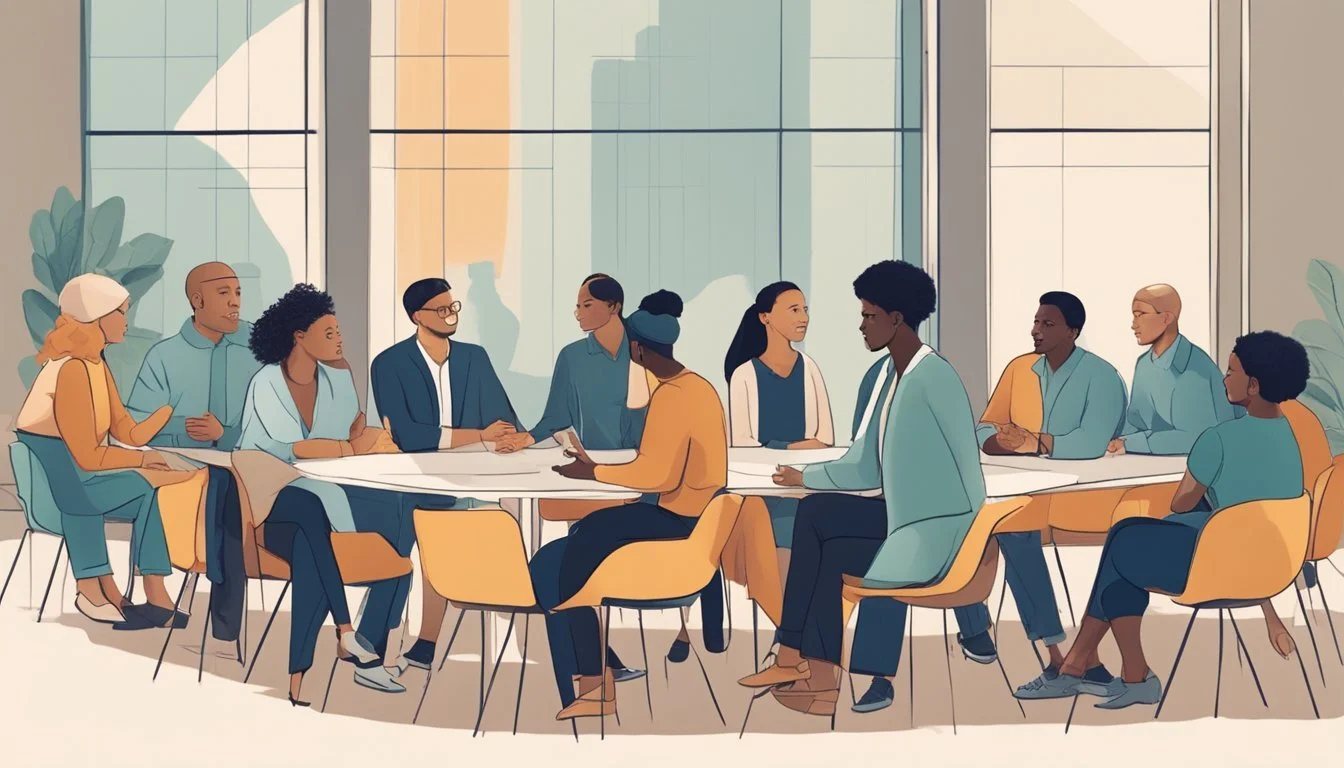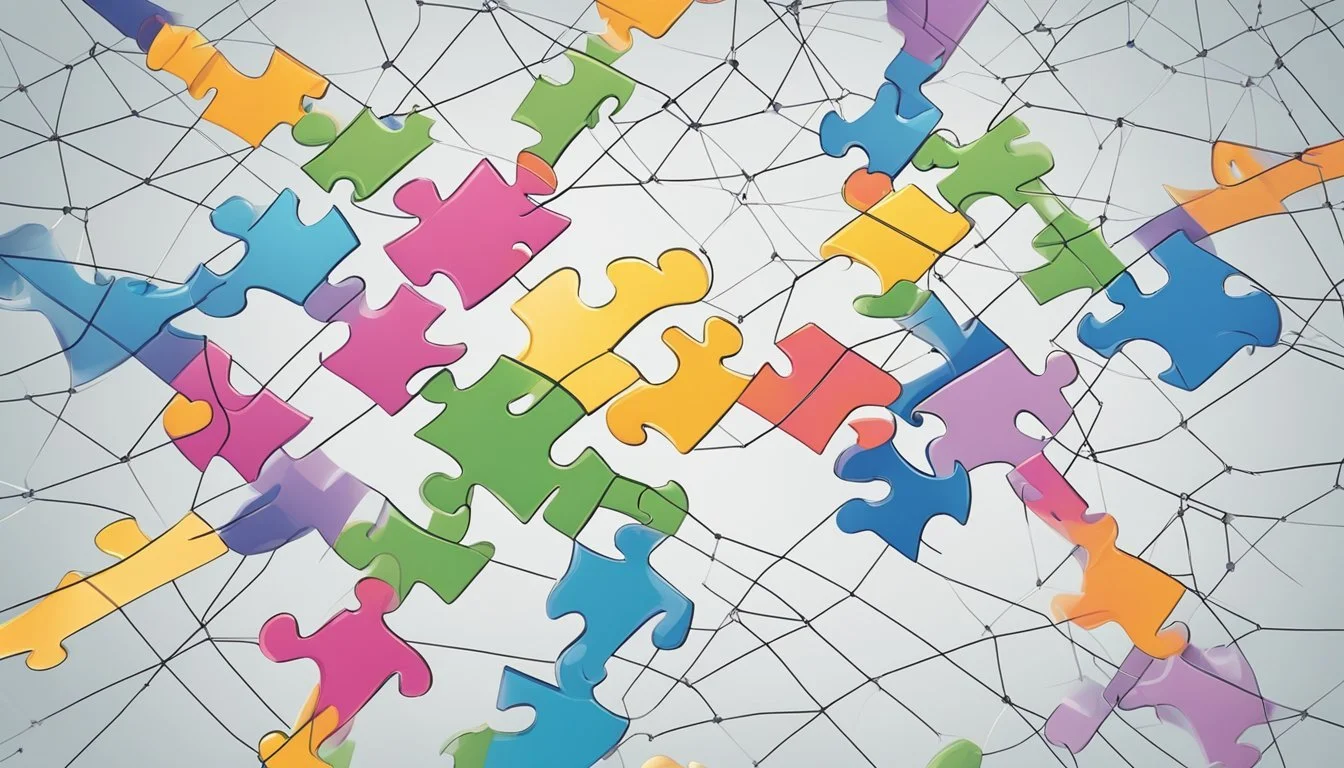Understanding the Sensory and Social World of Autism
Autism spectrum disorder affects how individuals perceive and interact with the world around them. For those on the spectrum, daily experiences can be vastly different from neurotypical individuals. Autistic people may feel intense sensory input, struggle with social communication, and experience both heightened anxiety and moments of profound joy.
Sensory sensitivities often play a significant role in how autism feels. Sounds, lights, textures, or smells that others barely notice can be overwhelming for someone with autism. This sensory overload can lead to feelings of discomfort or distress. At the same time, certain sensory experiences may trigger intense pleasure or fascination.
Social interactions present another dimension of the autistic experience. Difficulty reading social cues or expressing thoughts and emotions can make conversations challenging. This may result in feelings of isolation or misunderstanding. However, many autistic individuals also report deep satisfaction from connecting with others who share their interests or perspectives.
Understanding Autism Spectrum Disorder
Autism Spectrum Disorder (ASD) is a complex neurodevelopmental condition that manifests differently in each individual. It impacts communication, social interaction, and behavior patterns.
Defining Autism and the Spectrum
Autism is characterized by a wide range of traits and abilities, hence the term "spectrum." Some autistic individuals may require substantial support, while others live independently.
The spectrum encompasses various levels of:
Communication skills
Social interaction abilities
Repetitive behaviors
Sensory sensitivities
Diagnoses are based on observed behaviors and developmental history. Early signs often emerge in childhood, but some people receive diagnoses later in life.
Brain Development in Autism
Research suggests that autism involves differences in brain structure and function. Autistic brains may show:
Altered connectivity between brain regions
Differences in neurotransmitter activity
Variations in gray and white matter volumes
These neurological differences can affect:
Information processing
Sensory perception
Social cognition
Executive functioning
Each autistic person's brain is unique, contributing to the diverse presentations of ASD.
Myths and Misconceptions
Common misconceptions about autism can lead to misunderstanding and stigma.
Myth: Autistic people lack empathy. Fact: Many autistic individuals experience deep empathy but may express it differently.
Myth: Autism is caused by vaccines. Fact: Scientific evidence consistently shows no link between vaccines and autism.
Myth: All autistic people have extraordinary abilities. Fact: While some autistic individuals have exceptional skills, this is not universal.
Myth: Autism only affects children. Fact: Autism is a lifelong condition that persists into adulthood.
Educating society about these myths is crucial for promoting acceptance and support for the neurodivergent community.
Personal Experiences of Autism
Autism manifests differently for each individual, influencing how they perceive and interact with the world around them. The following subsections explore key aspects of the autistic experience from various perspectives.
Internal Perspective of an Autistic Person
For many autistic individuals, the world can feel overwhelming and intense. Thoughts may race and cluster, making it challenging to process information in a linear fashion. Some describe their minds as constantly active, noticing details others might overlook.
Autistic people often experience emotions deeply. Joy can be particularly intense, characterized by an all-encompassing feeling of excitement and satisfaction. This intensity extends to other emotions as well, sometimes leading to difficulty in emotional regulation.
Special interests play a significant role in the autistic experience. These intense passions can provide comfort, structure, and a sense of purpose. Engaging with these interests often brings a feeling of flow and deep satisfaction.
Navigating Social Interaction
Social interactions can be complex and draining for autistic individuals. Reading nonverbal cues, understanding sarcasm, and navigating unwritten social rules may prove challenging. This can lead to feelings of anxiety or exhaustion in social situations.
Many autistic people report feeling like they're constantly "masking" or camouflaging their natural behaviors to fit in. This process can be mentally taxing and may contribute to burnout over time.
Despite common misconceptions, many autistic individuals deeply desire social connections. They may simply express this desire differently or struggle with the mechanics of forming and maintaining relationships.
Sensory Sensitivity and Overload
Sensory experiences are often heightened for autistic individuals. Sounds might seem louder, lights brighter, or textures more pronounced. This heightened sensitivity can lead to both positive and negative experiences.
On the positive side, autistic people might find great pleasure in certain sensory inputs. The texture of a favorite fabric or the sound of a particular song can bring immense joy and comfort.
However, sensory overload is a common challenge. Busy environments with multiple sensory inputs can quickly become overwhelming. This overload may lead to discomfort, anxiety, or difficulty focusing on tasks at hand.
The Concept of Meltdown and Shutdown
Meltdowns and shutdowns are intense responses to overwhelming situations. A meltdown might involve an outward expression of distress, such as crying, shouting, or physical agitation. It's not a tantrum or intentional behavior, but rather an involuntary response to extreme stress.
Shutdowns, on the other hand, involve a withdrawal from the environment. An individual experiencing a shutdown might become non-verbal, have difficulty moving, or feel disconnected from their surroundings.
Both meltdowns and shutdowns are the result of the nervous system becoming overwhelmed. They often occur after prolonged periods of stress, sensory overload, or difficulty processing information. Recovery from these experiences can take time and requires a supportive, low-stress environment.
Communication and Social Skills
Autism can significantly impact communication abilities and social interactions. Individuals on the spectrum often face unique challenges in expressing themselves and interpreting others.
Challenges in Verbal and Non-Verbal Communication
Many autistic people struggle with verbal communication. They may have difficulty initiating or maintaining conversations, understanding figurative language, or modulating their tone of voice.
Some take longer to process speech and formulate responses. This can lead to delayed reactions in social situations.
Non-verbal communication poses its own set of challenges. Autistic individuals may struggle to use or interpret gestures, facial expressions, and body language effectively.
Eye contact can be particularly uncomfortable or overwhelming for some on the spectrum. They may avoid it entirely or maintain it for longer than typical, which can be misinterpreted by others.
Understanding Social Cues and Body Language
Autism often affects one's ability to read social cues and understand unspoken social rules. This can make navigating social situations confusing and stressful.
Facial expressions, tone of voice, and subtle body language may not convey the same information to an autistic person as they do to neurotypical individuals.
Social contexts and implied meanings can be challenging to grasp. Sarcasm, jokes, and idioms may be taken literally, leading to misunderstandings.
These difficulties can impact relationship-building and social integration. However, with support and practice, many autistic individuals develop strategies to improve their social skills and communication abilities.
Emotion, Empathy, and Relationships
Autism affects how individuals process emotions, experience empathy, and form relationships. These aspects intertwine in complex ways, shaping autistic people's social interactions and connections with others.
Processing Emotions and Alexithymia
Many autistic individuals experience alexithymia, a condition characterized by difficulty identifying and describing emotions. This can make it challenging to recognize and express their own feelings.
Alexithymia affects nearly half of autistic people, compared to less than 5% of non-autistic individuals. It can lead to confusion about emotional states and complicate social interactions.
Autistic people may struggle to interpret facial expressions or body language, making it harder to gauge others' emotions. This can result in misunderstandings or perceived lack of empathy.
Empathy and Connection
Contrary to common misconceptions, autistic individuals can and do experience empathy. The challenge often lies in expressing it in ways others readily recognize.
Cognitive empathy, or recognizing others' emotional states, may be more difficult for some autistic people. However, affective empathy - the ability to feel and respond to others' emotions - is typically intact.
Autistic individuals may show empathy through actions rather than words. They might offer practical help or focus intently on solving a problem when someone is upset.
Strong emotional responses to others' distress are common among autistic people, sometimes leading to emotional overwhelm or shutdown.
Building Relationships and Trust
Forming and maintaining relationships can be challenging for autistic individuals due to differences in communication styles and social expectations.
Autistic people often value deep, honest connections over small talk or superficial interactions. They may prefer fewer, more intense friendships to large social circles.
Trust is crucial in autistic relationships. Clear communication, consistency, and respect for boundaries help foster strong bonds.
Shared interests can serve as a foundation for autistic friendships, providing common ground and topics for engaging conversations.
Romantic relationships may develop differently for autistic individuals, with a focus on companionship and mutual understanding rather than traditional dating norms.
Navigating a Neurotypical World
Autistic individuals face unique challenges when interacting with a society designed primarily for neurotypical people. Adapting to social norms, work environments, and daily routines requires significant effort and energy.
Challenges in Daily Life and Work
Autistic people often struggle with sensory overload in everyday settings. Bright lights, loud noises, and crowded spaces can be overwhelming. At work, open office layouts and unexpected changes to schedules may cause stress.
Social interactions present another hurdle. Reading subtle facial expressions and understanding unwritten social rules can be difficult. This impacts both personal relationships and professional networking.
Time management and organization pose challenges for some. Adhering to strict schedules or juggling multiple tasks simultaneously may be taxing.
Creating Supportive Environments
Establishing routines and predictability helps many autistic individuals thrive. At home, this might involve following a consistent daily schedule. In the workplace, clear expectations and structured tasks can increase productivity.
Sensory-friendly spaces make a significant difference. This could include quiet areas, adjustable lighting, or noise-canceling headphones.
Employers can support autistic employees by providing clear, direct communication and allowing for flexible work arrangements when possible.
Advocacy and Acceptance
Self-advocacy is crucial for autistic individuals navigating a neurotypical world. This involves communicating needs clearly and requesting necessary accommodations.
Educating others about autism promotes understanding and acceptance. This can be done through open conversations, sharing personal experiences, or participating in awareness campaigns.
Building connections with other autistic individuals provides valuable support and a sense of community. Online forums and local support groups offer opportunities to share strategies and experiences.
Embracing neurodiversity in workplaces and social settings benefits everyone. It fosters innovation, creativity, and a more inclusive society.
Support and Resources
Finding support and accessing helpful resources can greatly enhance the lives of individuals with autism and their families. Various organizations, materials, and communities offer valuable assistance and information.
Family and Parenting Support
Parents of children with autism can benefit from specialized guidance. Autism Speaks provides a Parent's Guide to Autism, offering strategies for raising a child on the spectrum. This resource helps families learn about autism's impact and find ways to promote positive outcomes.
Support groups connect parents facing similar challenges. These groups provide emotional support and practical advice. Many local autism organizations host regular meetings where families can share experiences and coping strategies.
Online forums and social media groups offer convenient ways for parents to connect and exchange information. These platforms allow families to seek advice, share successes, and find encouragement from others who understand their unique situation.
Educational Materials and Books
A wealth of books and educational materials exist to help individuals with autism and their families. Dean Publishing and other specialized publishers offer titles covering various aspects of autism, from personal accounts to practical guides.
Popular books include memoirs by autistic authors, providing insights into their experiences. These works help readers understand the autistic perspective and can be particularly valuable for family members and professionals.
Educational resources range from basic introductions to in-depth explorations of specific topics. Many materials focus on skill development, sensory issues, and social interactions. Workbooks and visual aids are often available to support learning and daily living skills.
Communities and Networks
Online communities provide spaces for autistic individuals to connect with peers. Forums and social media groups allow people to discuss shared interests, challenges, and experiences. These networks can be especially valuable for those who find face-to-face interactions challenging.
The Autistic Self Advocacy Network (ASAN) offers resources and promotes self-advocacy. This organization provides a platform for autistic voices and works to advance the rights of individuals on the spectrum.
Local autism societies often organize events and meetups. These gatherings allow individuals with autism to socialize in supportive environments. Activities may cater to specific interests or age groups, fostering connections based on shared experiences.
Regional Aspects and Access to Resources
Autism support and services vary significantly across different locations. Geographic factors play a crucial role in determining the availability and accessibility of resources for individuals with autism and their families.
Variations in Autism Support by Location
Rural areas often face challenges in providing comprehensive autism services. Limited specialist providers and longer travel distances can make accessing care difficult. Urban centers typically offer more diverse resources, including specialized clinics and therapy options.
Some states have implemented autism-specific programs to address disparities. California's Regional Center system provides coordinated services across the state. New York offers autism-specific Medicaid waivers to expand access to care.
Resource availability can differ even within states. Wealthy suburbs may have more private providers, while underserved urban or rural areas rely more on public programs.
Accessibility of Autism Services in NY, CA, and AZ
New York City boasts numerous autism specialists and research centers. However, wait times can be long due to high demand. Upstate regions may have fewer options but shorter waits.
California's autism resources are concentrated in major cities like Los Angeles and San Francisco. The state's size means rural families often travel far for specialized care.
Arizona faces unique challenges with its large rural expanses. Phoenix and Tucson offer most autism services. Telehealth initiatives aim to expand access to remote areas.
All three states are working to improve insurance coverage for autism treatments. This helps make services more financially accessible across different regions.
Research, Media, and Autism Representation
Research on autism portrayal in media reveals insights into public perception and representation. Studies examine accuracy, impact, and stereotypes in various forms of media.
Current Research and Findings
Recent studies focus on autism representation in mainstream media. Researchers analyze portrayals in film, literature, and news. They examine how these depictions influence public understanding and stigma.
Some findings indicate that autistic individuals often view media representations as stereotypical and overly medicalized. Studies show a lack of diversity in autism portrayals across different media platforms.
Research also explores the impact of viewing fictional autism portrayals on public knowledge and attitudes. This includes assessing changes in viewer perceptions after exposure to autism-related content.
Portrayal in Movies and Television
Movies and TV shows featuring autistic characters have increased in recent years. Some popular examples include:
"The Good Doctor"
"Atypical"
"Rain Man"
These portrayals vary in accuracy and authenticity. Critics argue that some reinforce stereotypes, while others offer more nuanced representations.
Many autistic advocates call for more diverse and realistic depictions. They emphasize the importance of involving autistic individuals in the creative process.
Influences of Media on Public Perception
Media representations significantly shape public understanding of autism. Positive portrayals can increase acceptance and reduce stigma. Inaccurate depictions may perpetuate misconceptions.
Social media platforms provide spaces for autistic individuals to share their experiences directly. This offers a counterpoint to traditional media representations.
News coverage of autism research and developments also impacts public perception. The framing of these stories can influence how society views autistic individuals and their needs.






